How to Buy a Quality Sofa That Will Last
Learn about foam versus feathers, seat depth, springs, fabric and more for a couch that will work for years to come
A sofa is one of the biggest furniture investments you’ll make — and one of the most permanent. Even if you’re just buying one for a temporary fix, it’ll eventually get demoted from the living room to the family room to the basement and, finally, the dorm. Before you know it, a decade or more has passed, and that impulse purchase has become part of your life. So give some thought to it before you buy. Then buy the best-quality sofa that you can afford. Your purchase will be amortized over many years.
T.S. Adams Studio
How to Make It Work With Your Room
Complement the decor. If your interior is traditional, look for a sofa with rolled arms, a contoured back, skirting or tufted cushions. Contemporary sofas tend to have cleaner lines, fewer flourishes and understated upholstery.
How to Make It Work With Your Room
Complement the decor. If your interior is traditional, look for a sofa with rolled arms, a contoured back, skirting or tufted cushions. Contemporary sofas tend to have cleaner lines, fewer flourishes and understated upholstery.
Lauren Nelson Design
Get the right size. Consider the proportions of the room and determine what height, length and depth of sofa would look best in the space. If you’re uncertain, mock up a footprint on the floor using masking tape or blue painter’s tape. Or consider “building” a sofa out of empty boxes — then live with it for a few days to see how it feels.
Don’t overlook the arms. If you plan to spend a lot of time lying on the sofa for reading or naps, make sure it has enough space between the arms. Don’t rely on overall length alone, as the width of the arms will affect the space between. If you’re short on space, think about buying a sofa with low arms or no arms — it’ll make your room look larger.
Find an interior designer on Houzz
Get the right size. Consider the proportions of the room and determine what height, length and depth of sofa would look best in the space. If you’re uncertain, mock up a footprint on the floor using masking tape or blue painter’s tape. Or consider “building” a sofa out of empty boxes — then live with it for a few days to see how it feels.
Don’t overlook the arms. If you plan to spend a lot of time lying on the sofa for reading or naps, make sure it has enough space between the arms. Don’t rely on overall length alone, as the width of the arms will affect the space between. If you’re short on space, think about buying a sofa with low arms or no arms — it’ll make your room look larger.
Find an interior designer on Houzz
Gemma Parker Design
Design Considerations
Number of cushions. Asking yourself how many people you want to seat might sound silly, but the truth is, nobody likes sitting on the crack. So if you get a sofa with two cushions, expect just two people to use it. To accommodate more people, get a sofa with three cushions or a single long cushion, called a bench cushion.
Design Considerations
Number of cushions. Asking yourself how many people you want to seat might sound silly, but the truth is, nobody likes sitting on the crack. So if you get a sofa with two cushions, expect just two people to use it. To accommodate more people, get a sofa with three cushions or a single long cushion, called a bench cushion.
Jessica Helgerson Interior Design
Sofa back type. Sofas generally come with one of two types of backs: a pillow back, which has removable cushions or pillows along the rear; or a tight back, in which the upholstery is tailored to the contours of the sofa’s back.
Pillow-back sofas are generally considered more comfortable and inviting, but there’s a downside: Unless you’re diligent with your fluffing, the cushions will usually look slightly askew.
Sofa back type. Sofas generally come with one of two types of backs: a pillow back, which has removable cushions or pillows along the rear; or a tight back, in which the upholstery is tailored to the contours of the sofa’s back.
Pillow-back sofas are generally considered more comfortable and inviting, but there’s a downside: Unless you’re diligent with your fluffing, the cushions will usually look slightly askew.
J. Kurtz Design
If you’re the kind of person who is driven to distraction by something like that, you might want to consider a tight back.
How to Choose the Right Sofa Cushion
If you’re the kind of person who is driven to distraction by something like that, you might want to consider a tight back.
How to Choose the Right Sofa Cushion
Wendy Callahan Interiors & Fine Art
Sofa depth. When it comes to sofas, one size does not fit all. The depth of the seat and the angle of the back will influence how comfortable you feel.
Sofa depth. When it comes to sofas, one size does not fit all. The depth of the seat and the angle of the back will influence how comfortable you feel.
Valerie Legras Atelier
How do you know what depth is right for you? Let experience be your guide. If there’s a sofa or chair that you find particularly comfortable, measure the distance from the inside of your knee to the spot where your lower back hits the back of the sofa, then buy a sofa that has similar dimensions.
How do you know what depth is right for you? Let experience be your guide. If there’s a sofa or chair that you find particularly comfortable, measure the distance from the inside of your knee to the spot where your lower back hits the back of the sofa, then buy a sofa that has similar dimensions.
Amy Storm & Co.
Buying for the Long Term
Stick with neutrals. Since sofas are such a big investment, you’ll want yours to stay in fashion as long as possible. Given that, it’s often best to stick with a neutral fabric. You can always add color and pattern with throw pillows. Plus, pillows are easy and inexpensive to change if you decide to redecorate.
Buying for the Long Term
Stick with neutrals. Since sofas are such a big investment, you’ll want yours to stay in fashion as long as possible. Given that, it’s often best to stick with a neutral fabric. You can always add color and pattern with throw pillows. Plus, pillows are easy and inexpensive to change if you decide to redecorate.
Imperfect Interiors
Consider durability. If you have kids and a neutral sofa sounds like an invitation to disaster, consider a darker color or a sofa with a subtle overall pattern.
As a rule, synthetic fabrics are more durable, colorfast and cleanable. Tightly woven fabrics and fabrics that are heavy will stand up to wear and tear better, as will leather. Avoid satins, brocades and damasks unless the sofa won’t get much use.
Find a leather sofa
Consider durability. If you have kids and a neutral sofa sounds like an invitation to disaster, consider a darker color or a sofa with a subtle overall pattern.
As a rule, synthetic fabrics are more durable, colorfast and cleanable. Tightly woven fabrics and fabrics that are heavy will stand up to wear and tear better, as will leather. Avoid satins, brocades and damasks unless the sofa won’t get much use.
Find a leather sofa


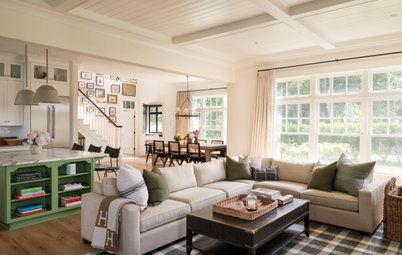
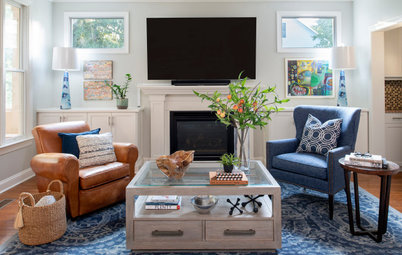
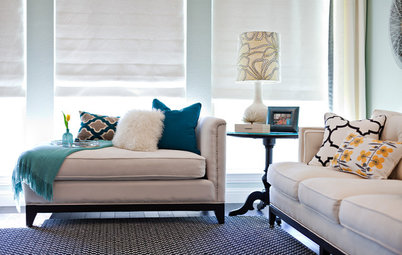
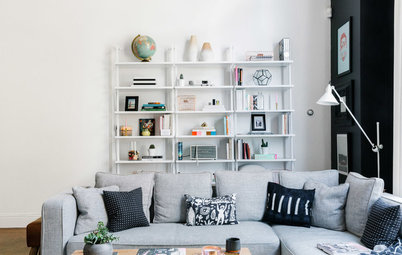
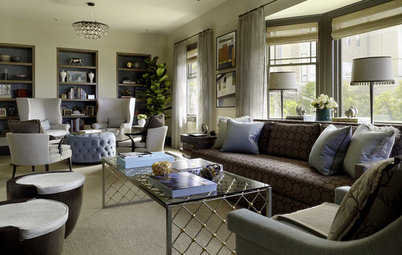
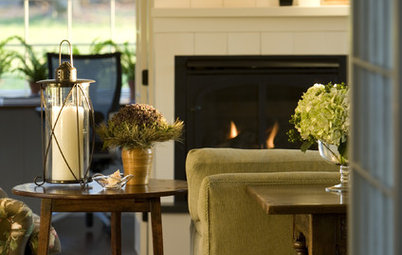
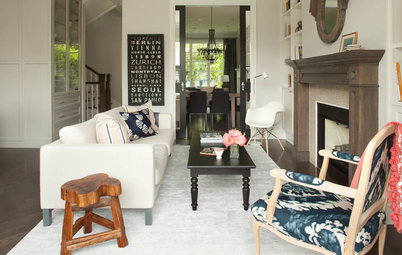
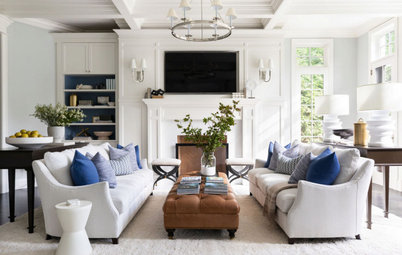
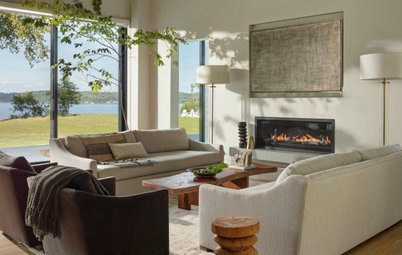
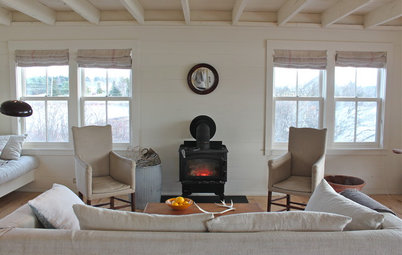
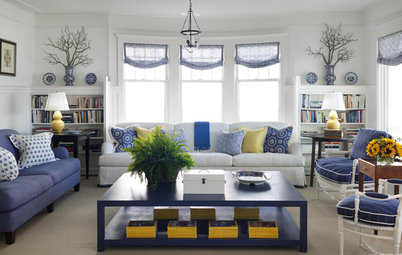
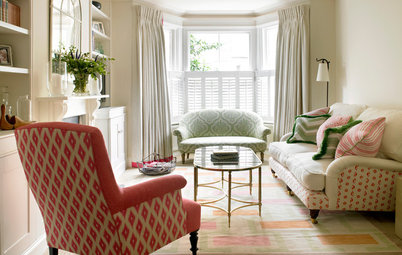
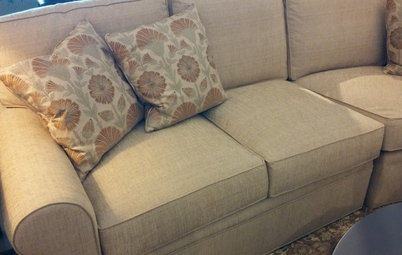
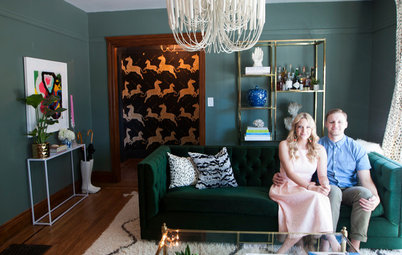
How to Spot a Quality Sofa
Test its sturdiness. Quality sofas should feel solid and heavy. Flop around on one to test its sturdiness and then lift it up by the corner and shake it a bit. If it feels light or wobbly, take a pass. Look for a frame made from a kiln-dried hardwood such as oak, alder, birch, maple or, alternatively, high-quality hardwood plywood or marine plywood. Eight-way, hand-tied springs are a hallmark of fine furniture, but sinuous S-shaped springs can provide nearly as much comfort. Drop-in coil springs are a less costly alternative.
Consider the cushions. Most cushions have a core of polyurethane foam; the denser the foam, the heavier it is and the longer it will last. In the cheapest furniture, the cushion is filled with just the polyurethane foam core. In better furniture, the core is wrapped with Dacron batting. Higher-quality options include poly-down cushions, which have down mixed with the batting; spring-down cushions, which feature a core of springs surrounded by foam and feathers; and all down, which is all feathers (and all work, so try to avoid this.)
Check the joints and frame. The best sofas have joints that are double doweled and fitted with corner blocks that are both glued and screwed (not stapled) into place. Quality pieces have legs that are part of the frame, not just attached to it (although removable feet do make it easier to get items through doorways).
Shop for sofas on Houzz